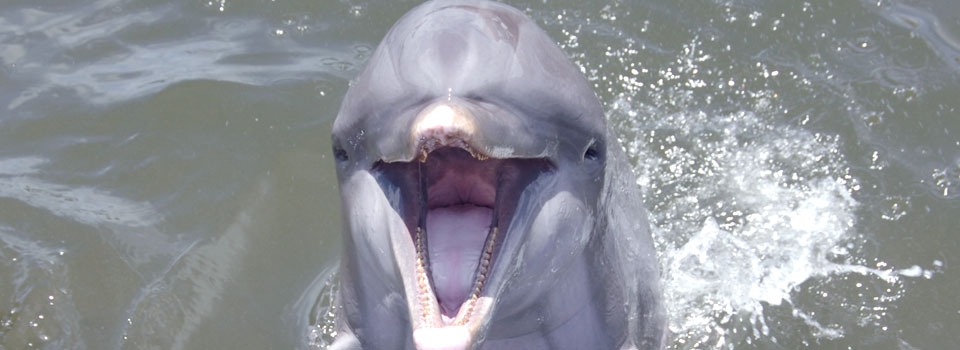

The sound changes left to right as the dolphin approaches the fish. The camera on the dolphin's melon is about 50 cm from the fish. The thin white line through the spectrogram about one-fifth the way from the left shows where the current still picture was taken from the video.

The upper inset shows the spectrogram of sounds as the dolphin approaches and catches the fish. A dolphin with the camera approaches a fish and then eats it We habituated dolphins to accept a small camera attached to the melon with a suction cup so that approach to the fish, capture, and departure can be recordedįigure 2. Victory squeals are also food calls that may communicate to other dolphins about food (You can hear these sounds at our poster).įigure 1. They are a reflection of dolphin emotions. Victory squeals are pulse bursts that vary in duration, peak frequency, and amplitude. These calls have reminded us of a child's squeal of delight. For a long time, we have called these after fish catch and after whistle sounds victory squeals. When a trainer's whistle signals that a dolphin will get a fish for a correct response, we often hear similar sounds after the whistle. We hear sounds after dolphins catch fish. We can now track when those specific dolphins visit the station, or any other station, without human observers on-site, regardless of time of day.Dolphins make sound to find their way, to communicate, and most importantly to catch food.


A mother and two of her calves (born in different years) have all been frequenting the same station! Even more exciting? We discovered those three signature whistles are from related dolphins. SDRP sighting data in the area narrowed down the list of potential dolphins, and the specific signature whistles of the short-listed dolphins were provided by Laela Sayigh, Vincent Janik, and Peter Tyack from the Sarasota Dolphin Whistle Database.Ĭombining this information led to the identification of the specific dolphins producing those three abundant whistles. We heard three whistle contours very often near the Cortez station, which spurred a collaborative effort to identify the dolphins producing those whistles. We took the next step and developed a tool that clusters whistles based on their contour (shape). So far, we’ve identified nearly a quarter of a million distinct whistles, and, because of work done by our partners at WHOI and the University of St Andrews, Scotland, to develop a Sarasota Dolphin Whistle Database of the unique identifying sounds that each dolphin makes, we can tell not just when dolphins are present near these stations, but which dolphins they are.īottlenose dolphins produce individually-distinctive signature whistles. (Listen online at Haiku Marine.)īecause these instruments collect so much data - many terabytes each year from three stations - our partners at New College have developed an automated system of identifying bottlenose dolphin whistles. They allow us to explore the underwater acoustic environment of Sarasota Bay to better understand the ecological dynamics of the bay and the behavior of its animals, including sound-producing fish, dolphins and manatees. The SDRP, working in partnership with David Mann of Loggerhead Instruments, Mote Marine Laboratory, New College of Florida, Eckerd College and local citizens, has developed a Passive Acoustic Listening Station (PALS) network, which includes 10 acoustic monitoring stations around Sarasota Bay that record audio around the clock.


 0 kommentar(er)
0 kommentar(er)
